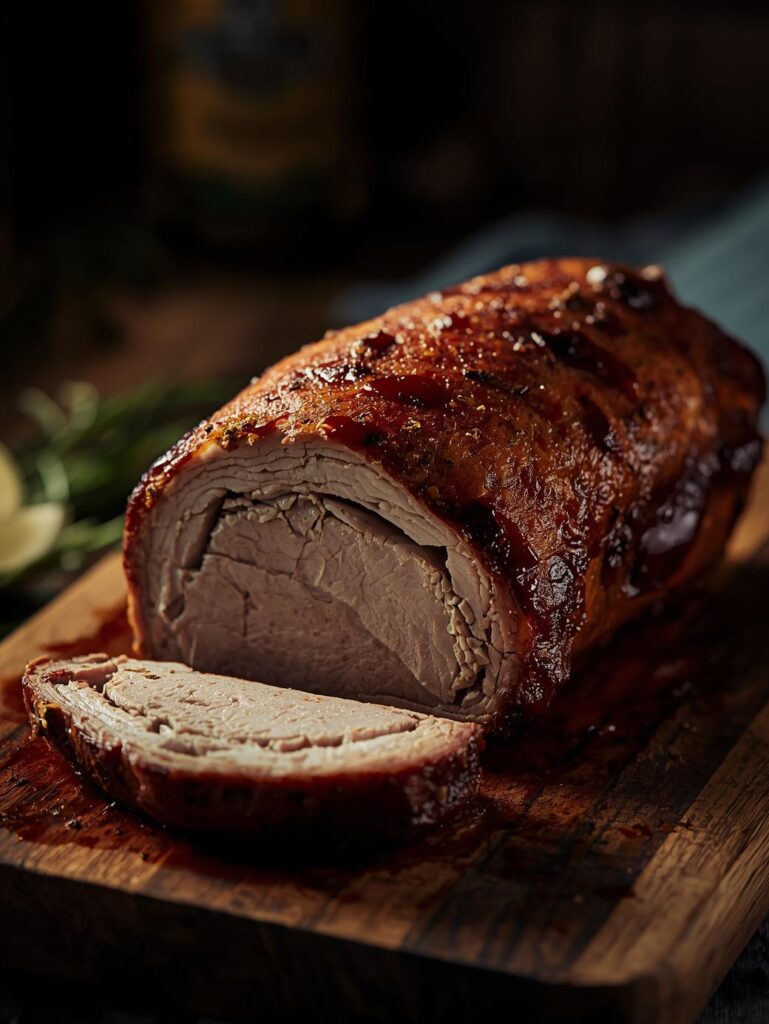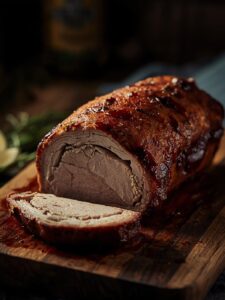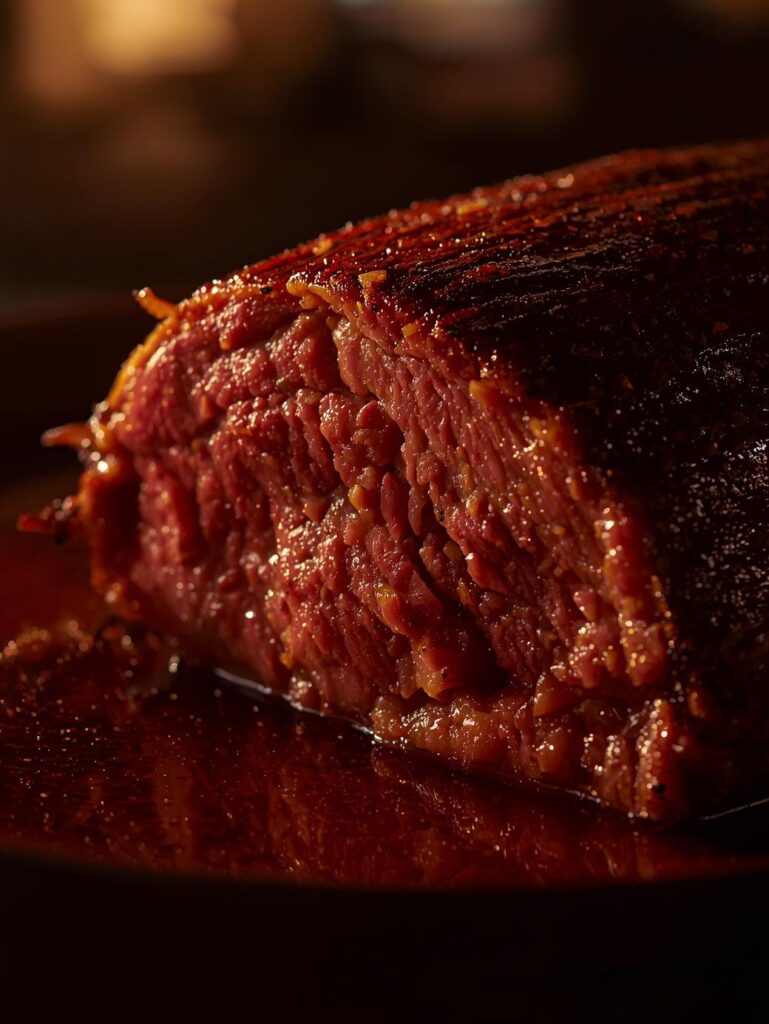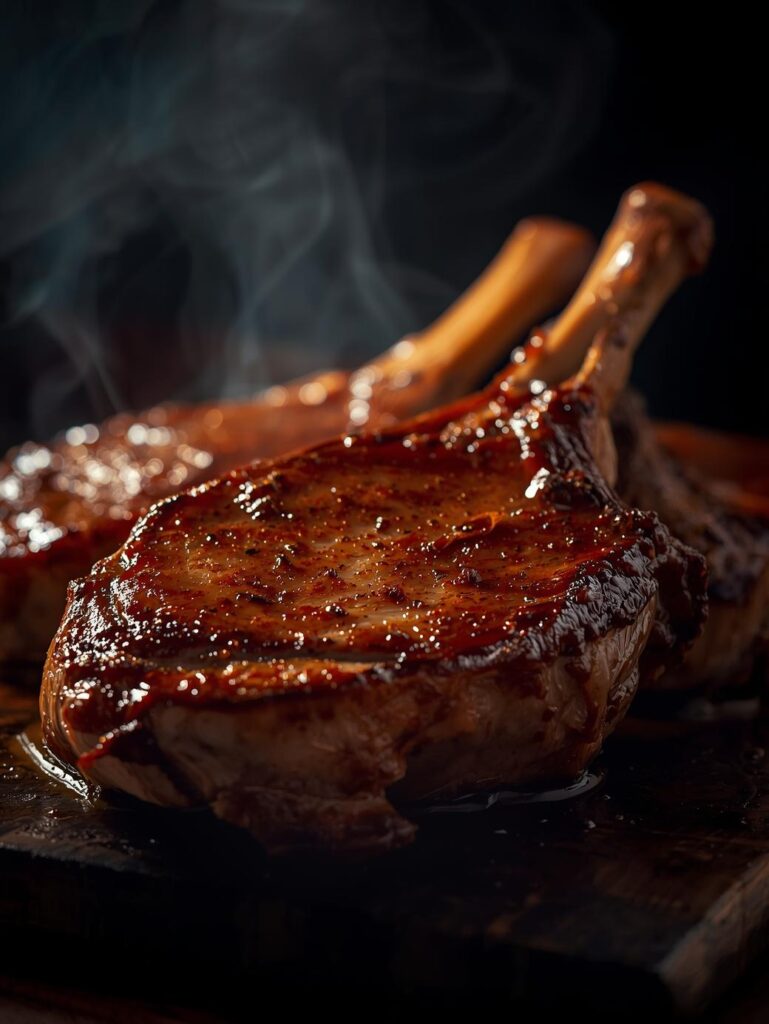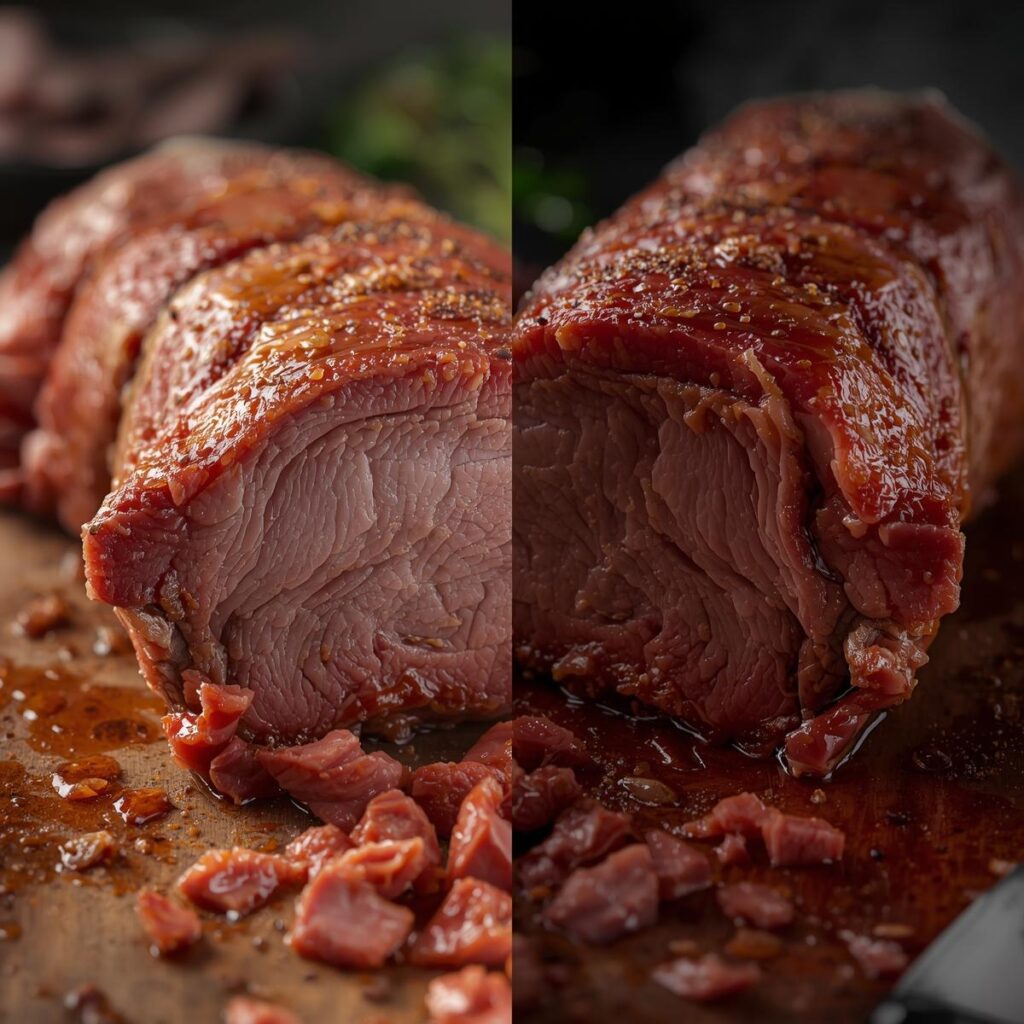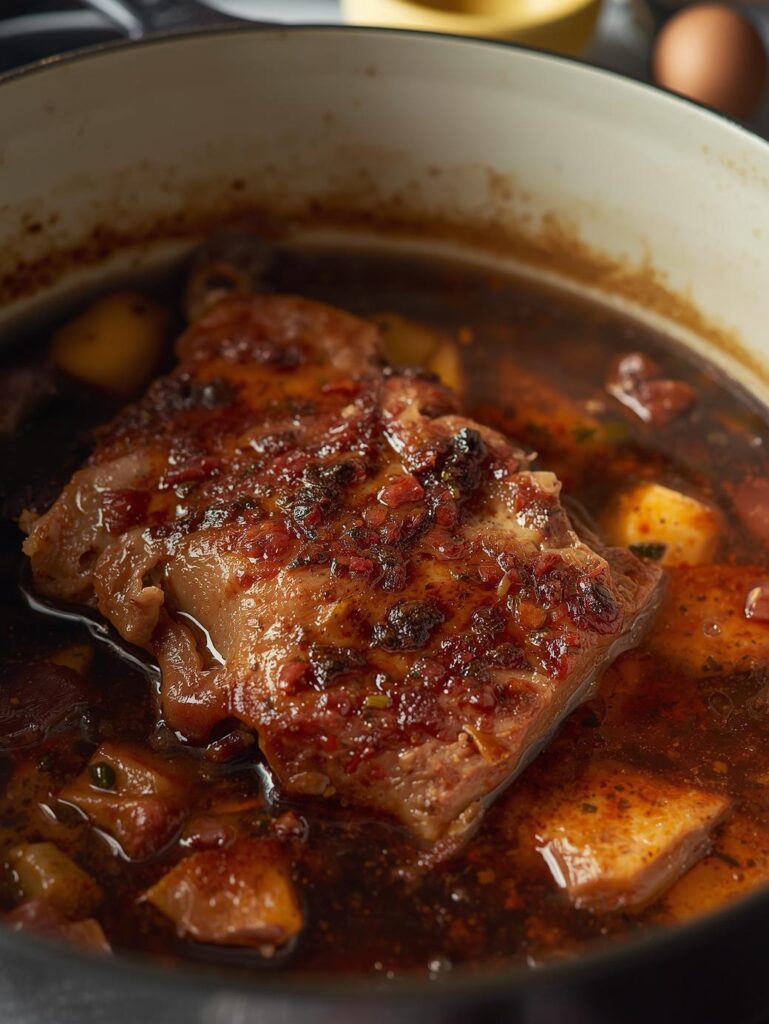Butcher’s Note: This guide solves the most common pork loin problem: dryness. A perfectly cooked pork loin roast should be juicy, tender, and flavorful—not the dry, chalky disappointment that haunts too many holiday dinners. The secret isn’t a magic temperature or special ingredient; it’s understanding the science of pork muscle fibers and employing simple techniques that guarantee moisture retention. Forget everything you’ve heard about “pork must be well-done”—we’re entering the era of perfectly pink, incredibly juicy pork.
Pork Loin Roast: Avoiding Dryness – The Complete Guide to Juicy, Perfect Results Every Time
“A dry pork loin roast isn’t a cooking failure—it’s an education opportunity. The line between juicy perfection and sawdust texture is measured in mere degrees and minutes. When you understand that pork loin is the chicken breast of the pork world—lean, delicate, and unforgiving of overcooking—you start treating it with the respect it deserves. The goal isn’t just to avoid dryness; it’s to achieve such juiciness that each slice glistens with natural pork flavor.”
Pork Loin Roast: Avoiding Dryness – The Complete Guide to Juicy, Perfect Results Every Time
Download Your Free Pork Loin Moisture Mastery Checklist
Welcome to pork loin redemption, where we banish dryness to the history books and usher in an era of consistently juicy, flavorful roasts. This guide will transform your approach to this often-misunderstood cut, teaching you the science-backed techniques that ensure perfect results whether you’re cooking a weeknight dinner or holiday centerpiece. Prepare to never serve dry pork again.
🎯 UNDERSTANDING THE DRYNESS PROBLEM
To solve dryness, we must first understand why pork loin is so prone to it.
⚙️ The Science of Pork Loin Dryness
Why Pork Loin Dries Out So Easily
- Lean Muscle Structure: Pork loin is a working muscle with minimal intramuscular fat, meaning it has less natural marbling to keep it moist during cooking compared to pork shoulder or pork belly.
- Protein Coagulation: At 140-150°F, muscle proteins tighten and squeeze out moisture rapidly. The window between perfectly cooked and overdone is surprisingly small.
- Carryover Cooking: Pork loin continues to cook 5-10°F after removal from heat. Failure to account for this is the #1 cause of dry roast.
- Surface Area Ratio: Compared to thicker cuts, pork loin’s relatively thin shape means more surface area exposed to heat, leading to faster moisture loss.
🎯 Moist vs. Dry Pork Loin Comparison
🚫 Dry Pork Loin Signs
- Pale, chalky white color
- Visible grain separation
- No juices when sliced
- Tough, chewy texture
- Internal temp 160°F+
- Shrunk significantly
✅ Juicy Pork Loin Signs
- Light pink, glistening interior
- Tight, even grain structure
- Juices pool when sliced
- Tender, moist texture
- Internal temp 140-145°F
- Minimal shrinkage
🔪 PREPARATION TECHNIQUES FOR MOISTURE RETENTION
Proper preparation sets the stage for juicy results before the roast even hits the heat.
🗣️ The Four Preparation Essentials
Pre-Cooking Moisture Management
- Dry Brining (Salt Therapy): Salt the roast heavily 12-24 hours before cooking. The salt draws out moisture, dissolves, then is reabsorbed, seasoning the meat deeply and improving water retention capacity.
- Bring to Room Temperature: Let the roast sit out for 60-90 minutes before cooking. A cold center requires longer cooking time, increasing dryness risk.
- Fat Cap Management: If your roast has a fat cap, score it in a crosshatch pattern. This helps render the fat to baste the meat during cooking.
- Even Thickness: If one end is significantly thinner, consider folding it under and tying it to create even thickness for uniform cooking.
📊 Pork Loin Preparation Matrix
🎯 Choosing Your Moisture-Enhancement Strategy
| Technique | Best For | Time Required | Moisture Gain | Skill Level |
|---|---|---|---|---|
| Dry Brining | Pure pork flavor | 12-24 hours | +25% moisture retention | 🇺🇸 Beginner |
| Wet Brining | Maximum juiciness | 4-12 hours | +40% moisture gain | 🇺🇸 Intermediate |
| Marinade | Flavor infusion | 2-8 hours | +15% moisture + flavor | 🇺🇸 Beginner |
| Bacon Blanket | Fat protection | 15 minutes | +20% fat basting | 🇺🇸 All Levels |
| Herb Paste | Crust formation | 30 minutes | +10% surface protection | 🇺🇸 Intermediate |
🔥 COOKING METHODS FOR JUICY RESULTS
Your cooking technique determines whether you achieve juicy perfection or dry disappointment.
🎪 The Two-Temperature Method
The Foolproof Approach
- High Heat Start: Begin at 425°F for 15-20 minutes to develop a flavorful crust and kill surface bacteria. This initial blast creates the Maillard reaction for superior flavor.
- Low Heat Finish: Reduce to 325°F for the remainder of cooking. This gentle heat allows the interior to come to perfect doneness without overcooking the outer layers.
- Temperature Monitoring: Use a reliable meat thermometer inserted into the thickest part. Remove at 135°F for medium (140°F after resting).
- The Rest is Non-Negotiable: Rest for 15-20 minutes before slicing. This allows juices to redistribute throughout the meat rather than running out onto the cutting board.
🛠️ Alternative Cooking Methods
Beyond Basic Roasting
- Reverse Searing: Start low (250°F) until 120°F internal, then sear at high heat. Creates incredibly even doneness and superior crust.
- Sous Vide Precision: Cook at 140°F for 2-4 hours, then quick sear. Guarantees perfect edge-to-edge doneness with maximum moisture retention.
- Smoking Method: Smoke at 225°F until 140°F internal. The low, slow heat prevents moisture loss while adding incredible flavor.
- Stuffed and Rolled: Butterfly the loin, add a moisture-rich stuffing, roll and tie. The stuffing acts as an internal moisture barrier.
🍖 TEMPERATURE AND TIMING MASTERY
Precision temperature control is your most powerful weapon against dryness.
🌡️ Temperature Doneness Guide
The New Pork Safety Standards
- 135°F (Medium-Rare): Removed from heat, rises to 140°F. Juicy, slightly pink, incredibly tender. USDA approved since 2011.
- 140°F (Medium): Removed from heat, rises to 145°F. Traditional “perfect” with light pink center and excellent juiciness.
- 145°F (Medium-Well): Removed from heat, rises to 150°F. Slight dryness begins, but still acceptable for those preferring more doneness.
- 150°F+ (Well): Significant dryness, chalky texture. Protein coagulation has squeezed out most natural juices.
⏰ Timing and Weight Guide
Estimating Cook Times
- 2-3 lbs: 45-60 minutes total at 325°F after initial sear. Check temperature early and often.
- 3-4 lbs: 60-75 minutes total. The sweet spot for most home cooks—large enough to be impressive, small enough to cook evenly.
- 4-5 lbs: 75-90 minutes total. Consider splitting into two smaller roasts for more even cooking.
- Bone-In vs Boneless: Bone-in takes 10-15 minutes longer but can be slightly more flavorful and forgiving.
📋 THE FOOLPROOF PORK LOIN WORKFLOW
The Step-by-Step Juicy Pork Loin Method
Day Before: Preparation
Dry brine with 1 tsp kosher salt per pound. Place on rack in refrigerator uncovered to dry the surface and season deeply.
2 Hours Before: Setup
Bring roast to room temperature. Apply herb paste or bacon blanket if using. Preheat oven to 425°F.
Cooking Phase: Precision
Sear 15 min at 425°F, then reduce to 325°F. Cook to 135°F internal (not a minute longer!).
Final Step: Rest & Serve
Rest 15 minutes minimum. Slice against the grain 1/2-inch thick. Serve immediately.
🚨 PORK LOIN TROUBLESHOOTING
🎯 Solving Common Pork Loin Problems
| Problem | Symptoms | Cause | Solution |
|---|---|---|---|
| Dry Ends, Raw Center | Uneven cooking | Oven too hot, uneven thickness | Use two-temperature method, tie for even thickness |
| Pale, Steamed Texture | Lack of browning | Oven too low, wet surface | Pat dry before cooking, start with high heat blast |
| Tough, Chewy Texture | Rubbery mouthfeel | Overcooked, wrong slice direction | Cook to lower temperature, always slice against grain |
| Bland Flavor | Missing seasoning | Insufficient salt, no dry brine | Dry brine 12-24 hours, use herb rubs, make pan sauce |
🏁 JUICY PORK LOIN MASTERY ACHIEVED
Perfect pork loin isn’t about secret ingredients or magical techniques—it’s about understanding the science of heat and muscle fibers, then applying that knowledge with precision and care. The difference between dry disappointment and juicy perfection is measured in mere degrees and minutes, but the impact on your dining experience is monumental.
Remember that pork loin’s leanness is both its greatest challenge and its greatest opportunity. When treated with the respect it deserves—through proper preparation, precise cooking, and patient resting—it transforms into one of the most elegant, satisfying pork experiences possible. Your days of dry pork are officially over.
Learn the exact temperatures for perfect pork every time with our complete guide
Explore More Pork Perfection: Continue your journey to pork mastery.

